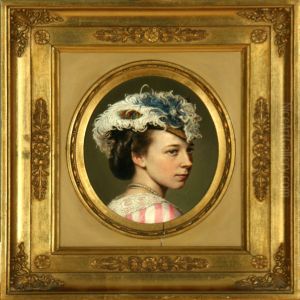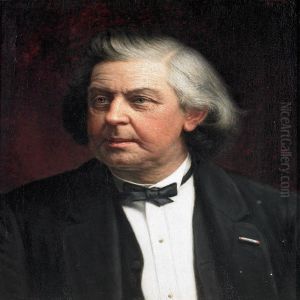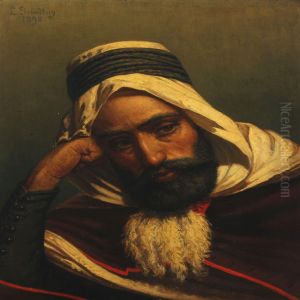Ludvig Grundtvig Paintings
Ludvig Grundtvig, born on May 9, 1836, in Copenhagen, Denmark, was a multifaceted Danish photographer, painter, and ceramist, whose contributions left a noticeable imprint on the visual arts landscape of Denmark in the 19th century. Coming from a lineage enriched with intellectual and cultural heritage—his father was N.F.S. Grundtvig, a prominent clergyman, philosopher, and poet—Ludvig's upbringing was steeped in an environment that valued creativity, education, and national heritage. This background undoubtedly influenced his approach to art, which was characterized by a deep-rooted sense of nationalism and an appreciation for Denmark's landscapes and people.
Grundtvig initially embarked on his artistic journey with a focus on painting, studying at the Royal Danish Academy of Fine Arts where he honed his skills and developed his style. However, it was his engagement with photography, a medium then still in its infancy and rapidly evolving, that marked a significant pivot in his career and contributions to Danish art. Embracing photography in the mid-19th century, Grundtvig became one of the pioneering Danish photographers, experimenting with and mastering the techniques of the time.
His photographic works are particularly noted for their artistic quality and technical proficiency, blending the eye of a painter with the precision of a photographer. Grundtvig captured a range of subjects, from landscapes and urban scenes to portraits, imbuing each with a sense of depth and character that transcended mere documentary. His landscapes and cityscapes, often depicting areas around Copenhagen and the Danish countryside, are celebrated for their ability to convey the beauty and spirit of the locales, serving as historical documents as well as works of art.
In addition to his photographic endeavors, Grundtvig continued to paint and also explored ceramics, demonstrating his versatility as an artist. His ceramic works, though less known than his photographs, contributed to the revival of ceramic art in Denmark, showcasing his skill and creativity across mediums.
Ludvig Grundtvig's death on September 28, 1901, marked the end of an era in Danish art, but his legacy lived on. His works remain a significant part of Denmark's cultural heritage, offering insights into the country's landscape, people, and artistic evolution during the 19th century. Grundtvig's contributions to photography, in particular, have earned him a place among the early pioneers of the medium, recognized for his ability to blend artistic vision with emerging technology to capture the essence of his homeland.


